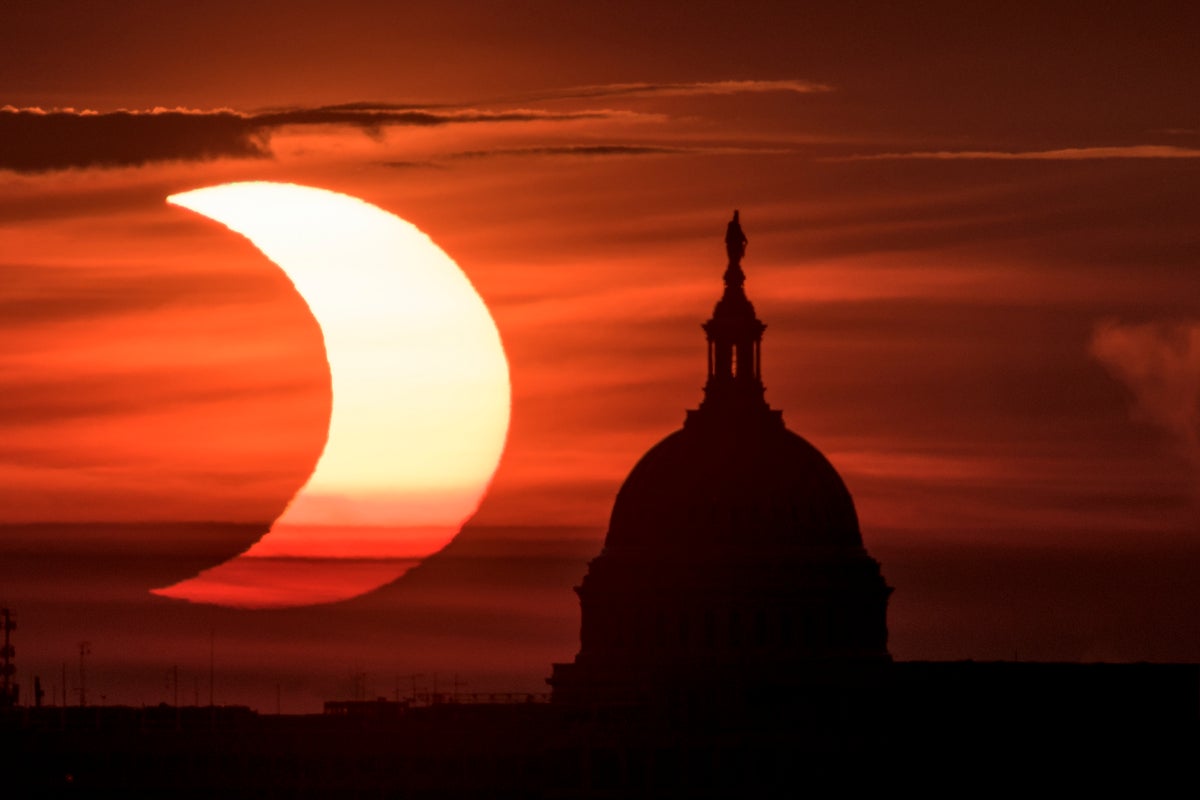
Skywatchers around the country will be able to see a partial solar eclipse this weekend.
While not as rare as a total solar eclipse, the celestial spectacle only occurs twice a year.
Those who miss this year’s fanfare will have to wait until the fall to catch the next one.
Here’s what you should know…
When and where can you see the eclipse in the US?
Major cities across the East Coast will need to wake up early on Saturday morning.
In Portland, Maine, it starts the earliest, at 6:27 a.m. local time, reaching its maximum phase at 6:59 a.m.
Boston has just four more minutes to sleep in, and New York City is next on the list.
Residents of the nation’s capital and Buffalo, New York, can sleep in the latest. The partial begins at 7:02 a.m. in Buffalo.
What is a partial solar eclipse?
A partial solar eclipse occurs when the moon partially blocks the sun when passing between the sun and the Earth, resulting in a shadow on parts of the Northern Hemisphere.
Only a part of the sun appear to be covered, giving it a crescent shape.
On average, they occur about twice a year.
“It will feel like a particularly cloudy day,” Juan Carlos Muñoz-Mateos, of the European Southern Observatory, told The Associated Press.
How can you view it safely?
Viewers must use proper eye protection at all times while watching the eclipse. It is never safe to look directly at it without proper protection.
What is proper protection? Special eclipse glasses or a safe handheld solar viewer.
Regular sunglasses are not safe for viewing the sun — no matter how dark they are.
“Do NOT look at the Sun through a camera lens, telescope, binoculars, or any other optical device while wearing eclipse glasses or using a handheld solar viewer — the concentrated solar rays will burn through the filter and cause serious eye injury,” NASA advises.
Who else gets to see it?
North America, Europe, Africa, northern Asia, small parts of South America, Greenland, and Iceland will all see the partial solar eclipse.
While the U.S Northeast sees it during sunrise, the eclipse will begin in the mid-to-later morning in western Europe and northwestern Africa.
In eastern Europe and northern Asia, most or even all of the eclipse will occur in the afternoon or early evening.
What if you miss this one?
If you miss this one, don’t fear!
The next partial solar eclipse is slated for September 21, 2025.
But, seeing that one may require some travel.
People in Australia, Antarctica, and the Pacific and Atlantic Oceans are in its geographic range.
Source: independent.co.uk


